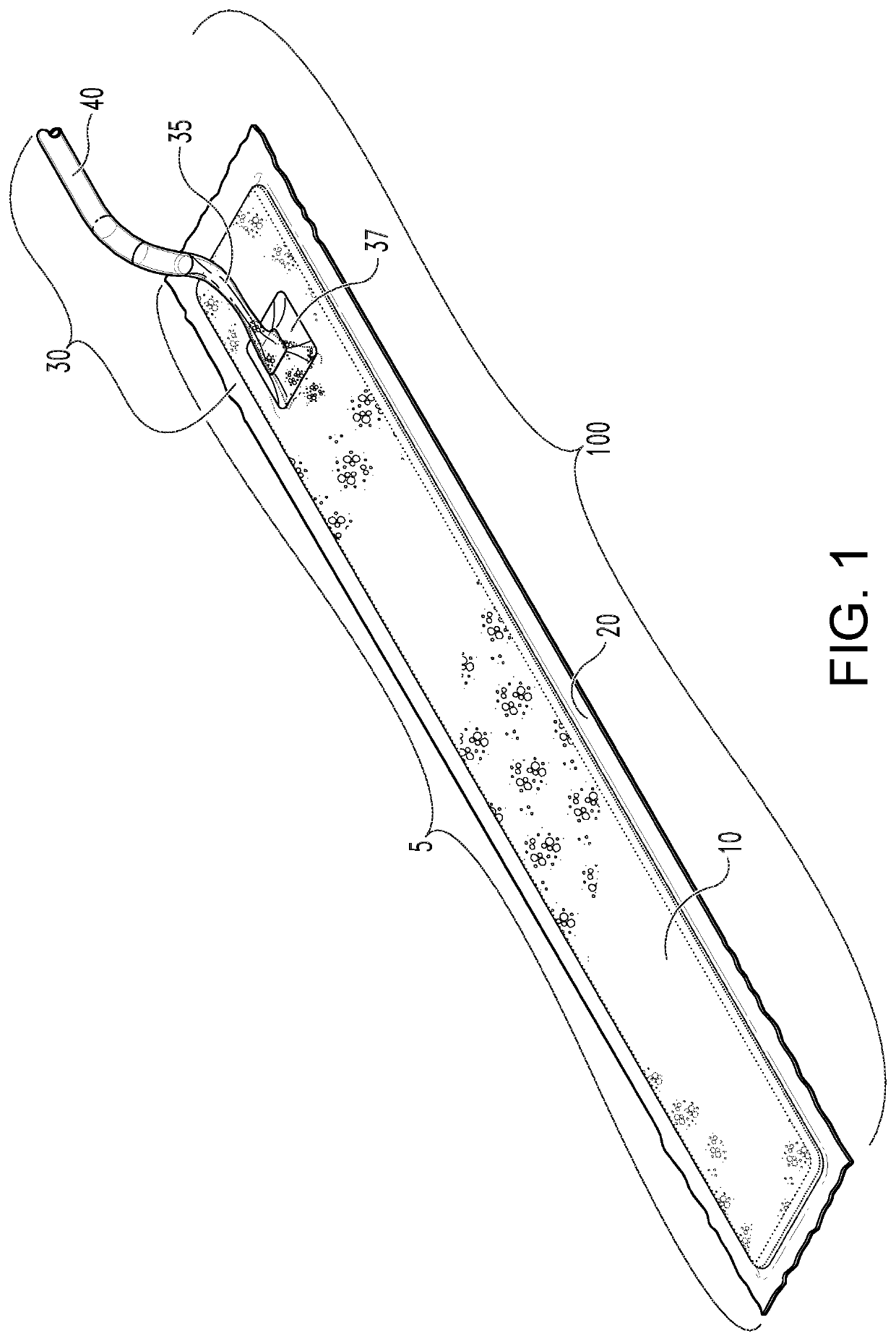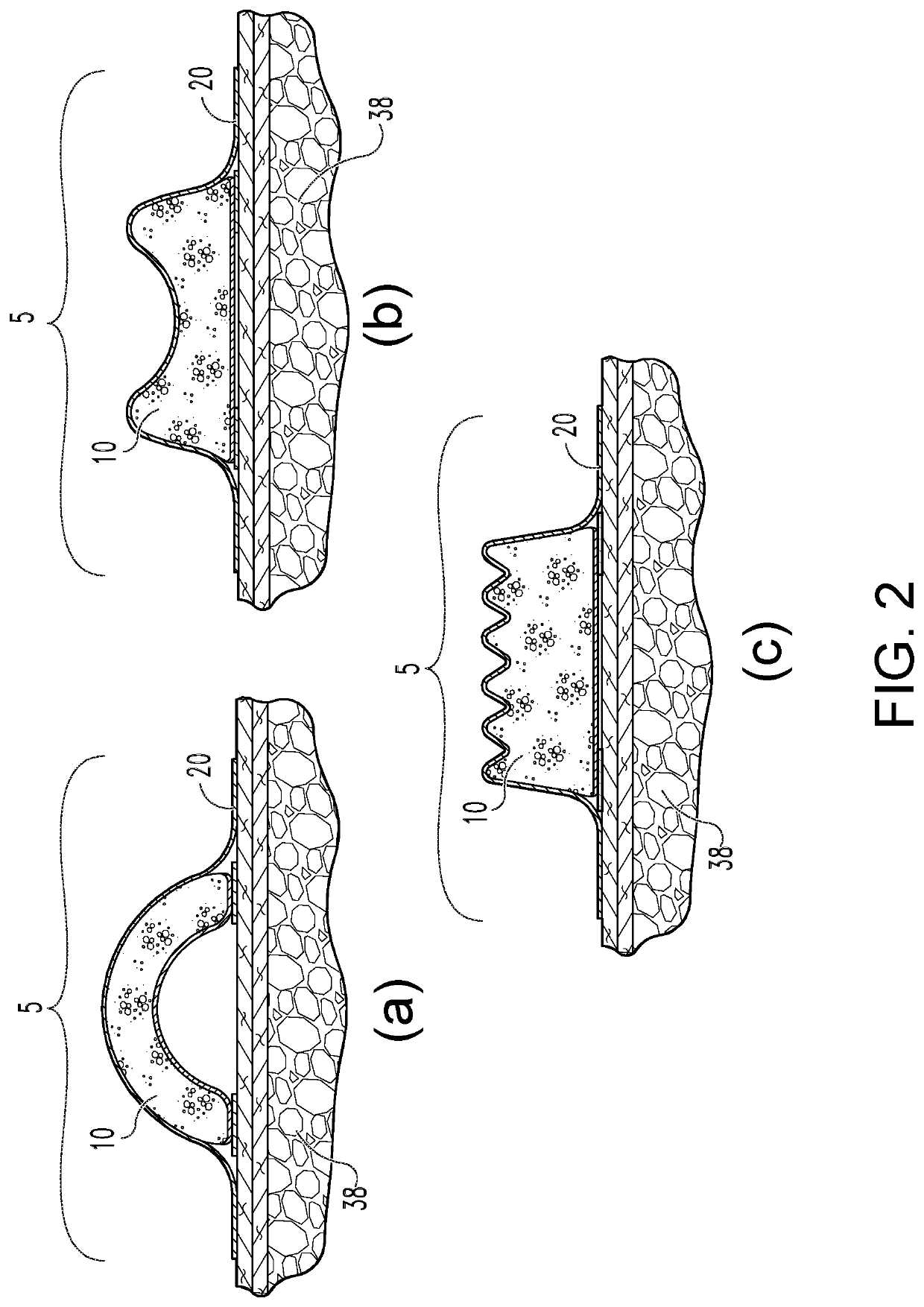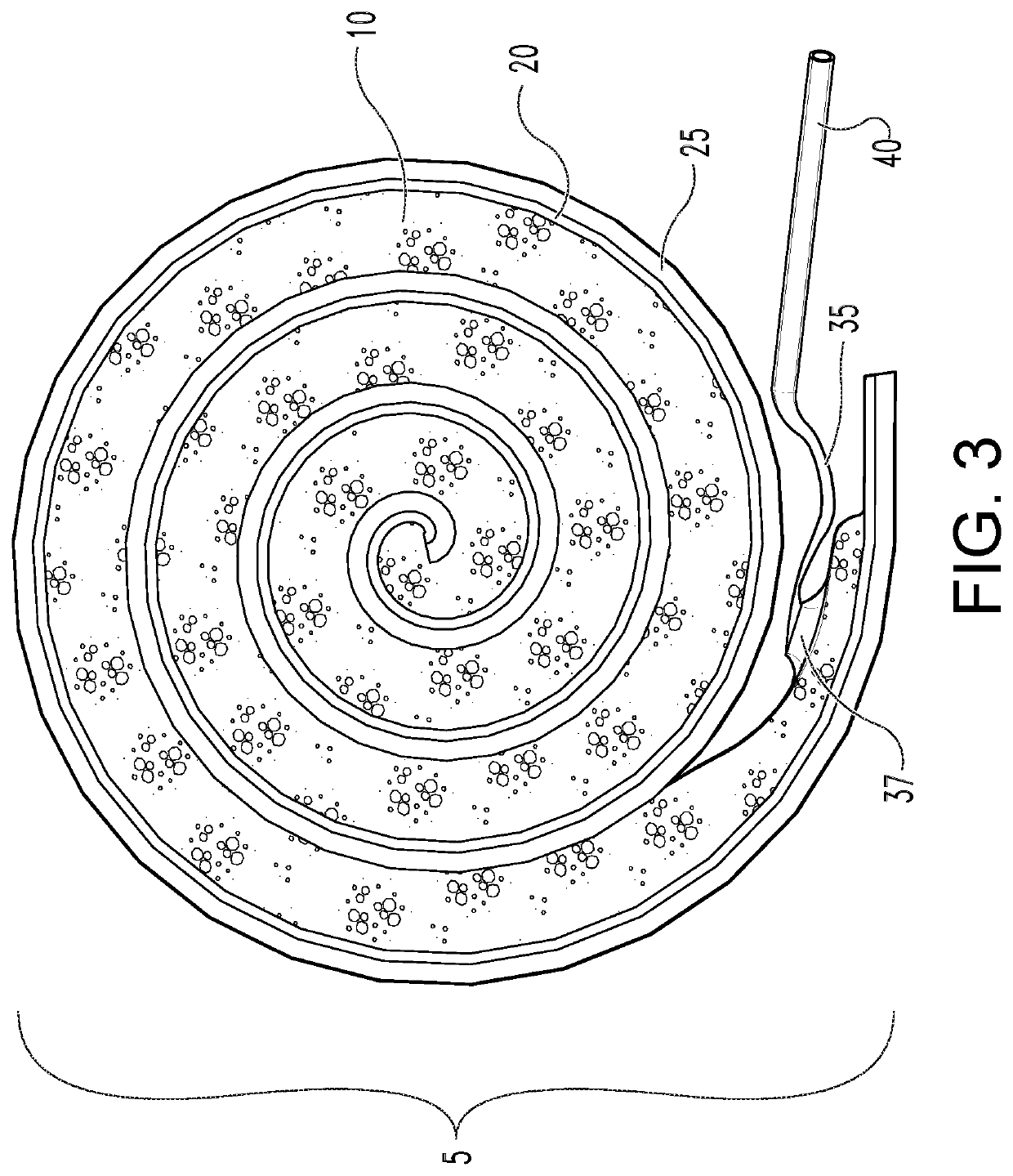Negative pressure wound apposition dressing system
a dressing system and negative pressure technology, applied in the field of mammalian tissue medical treatment and therapy, can solve the problems of affecting the healing effect of surgical wounds, affecting the patient's recovery, so as to promote the healing of surgical wounds, promote tissue oxygenation, and promote the effect of negative pressur
- Summary
- Abstract
- Description
- Claims
- Application Information
AI Technical Summary
Benefits of technology
Problems solved by technology
Method used
Image
Examples
Embodiment Construction
[0034]Before the present details of the invention are disclosed and described, it is to be understood that this invention is not limited to the specific components, methods, and implementation, or to the precise arrangements and instrumentalities shown, as such may, of course, vary while remaining within the scope and spirit of the invention. It is also to be understood that the terminology used herein is for the purpose of describing particular implementations only, and to assist in understanding the disclosure, and is not intended to be limiting.
[0035]The figures illustrating the negative pressure wound apposition dressing, device and system of the invention show some mechanical elements that partially or fully resemble standard mechanical elements used in the art and that will be recognized by one skilled in the art. The detailed descriptions of these elements are presented herein only to the degree necessary to facilitate an understanding of the novel features of the present inv...
PUM
 Login to View More
Login to View More Abstract
Description
Claims
Application Information
 Login to View More
Login to View More - R&D
- Intellectual Property
- Life Sciences
- Materials
- Tech Scout
- Unparalleled Data Quality
- Higher Quality Content
- 60% Fewer Hallucinations
Browse by: Latest US Patents, China's latest patents, Technical Efficacy Thesaurus, Application Domain, Technology Topic, Popular Technical Reports.
© 2025 PatSnap. All rights reserved.Legal|Privacy policy|Modern Slavery Act Transparency Statement|Sitemap|About US| Contact US: help@patsnap.com



